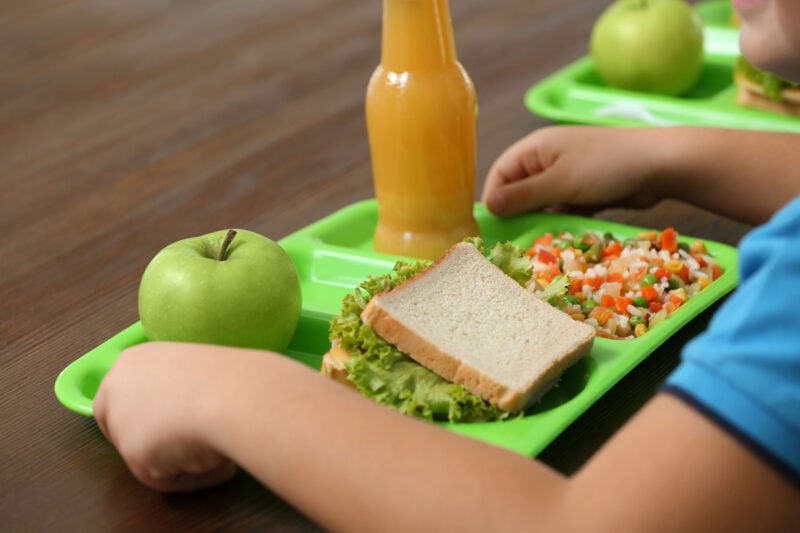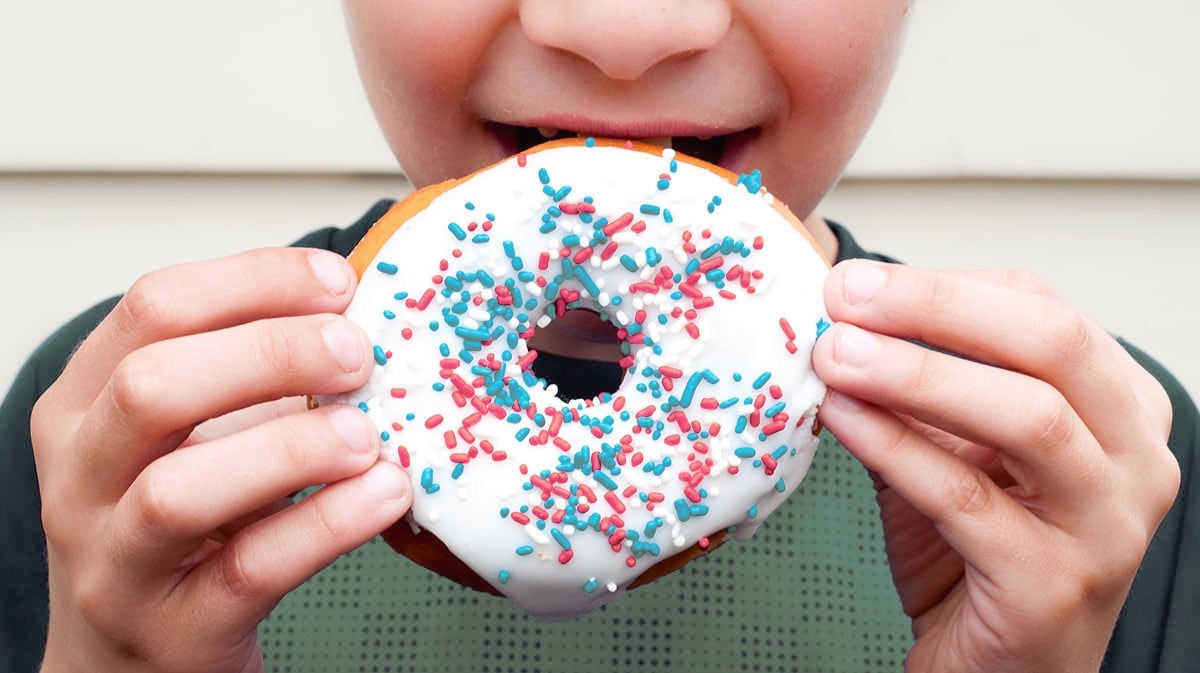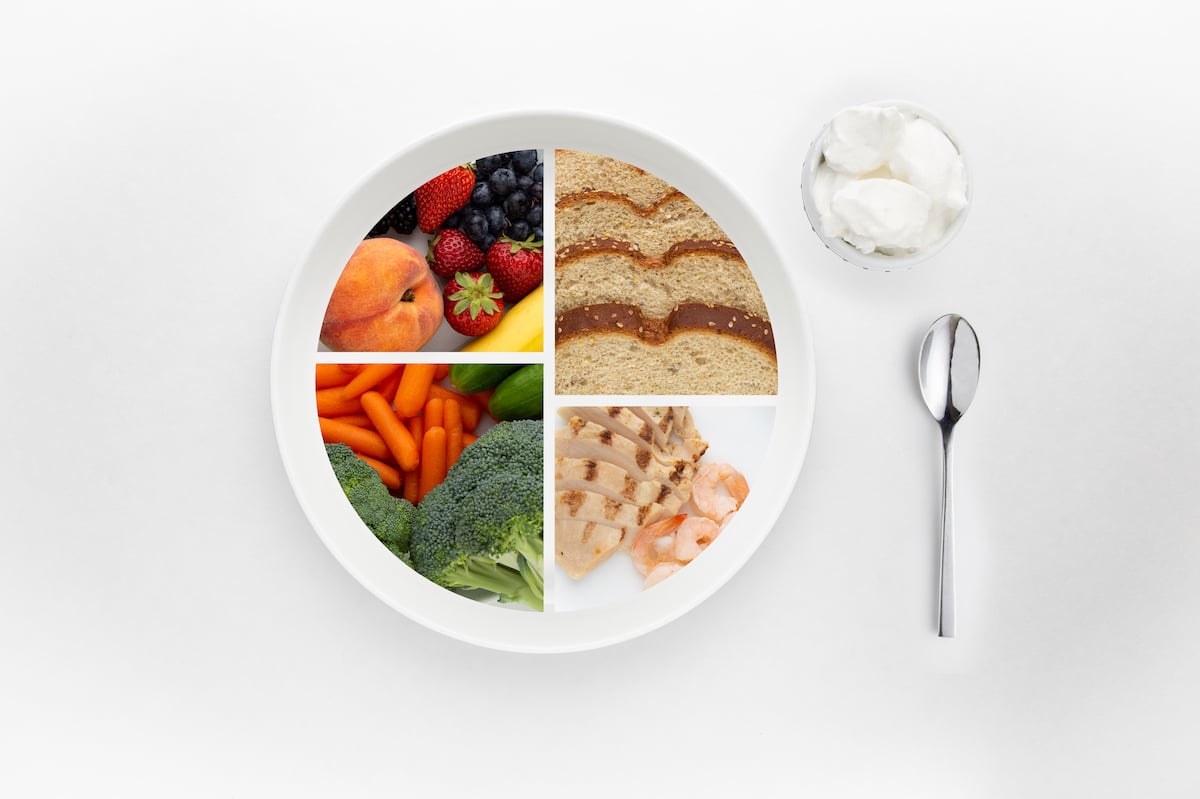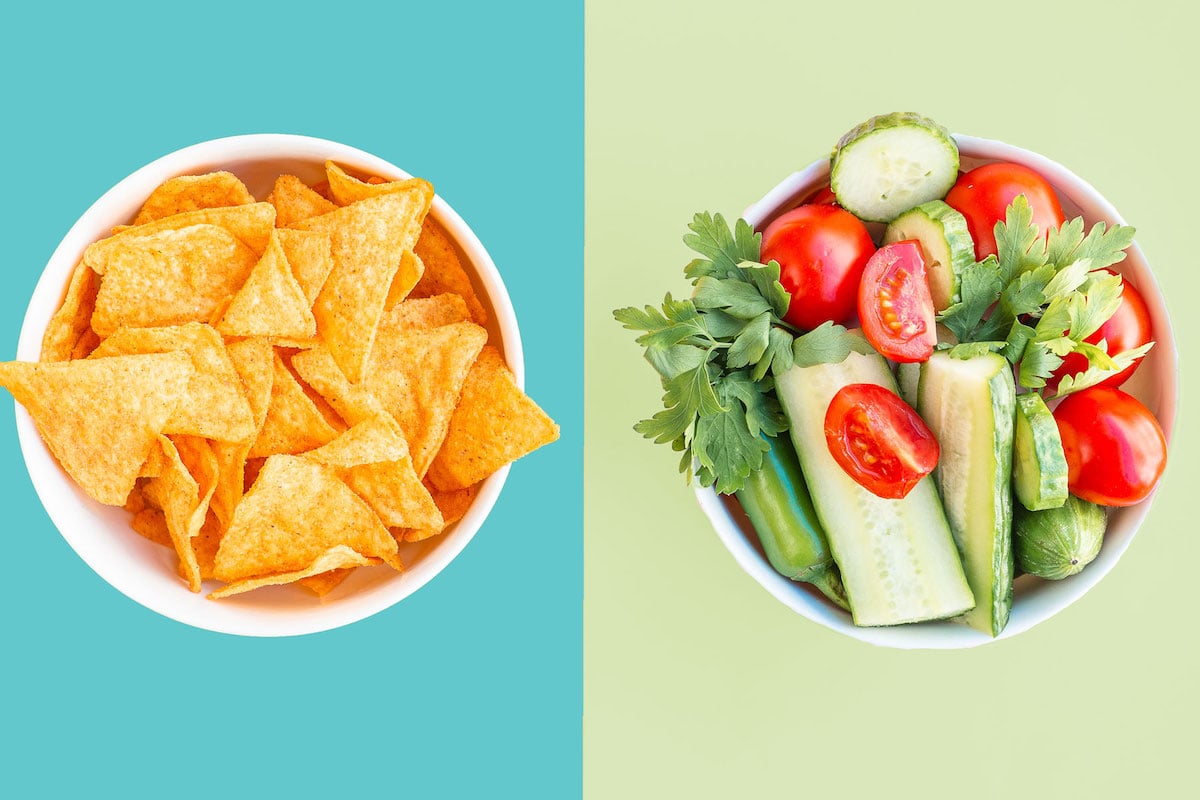The National School Lunch Program (NSLP), responsible for meals in K-12 schools, plays a remarkable role in American history. It’s a complicated, often politicized, federally funded, and locally implemented program that spends about $14 billion a year to feed 30 million children and teens in the U.S. And, over the last decade or so, the NSLP has undergone some of its most significant changes to date, to improve the nutritional quality of school meals at a time when rates of obesity and Type 2 diabetes are rising among children—an effort that’s making progress but still has a long way to go.
“For many kids from working-class families, these meals make up the bulk of their daily calories,” Mark Hyman, MD, a Levels Health advisor, writes in his 2020 book Food Fix. “School meals are critical in the battle against childhood obesity and should be held to the highest standard.”
Students consume as much as half of their daily calories during the school day, and some children eat both breakfast and lunch at school. At the same time, one in five children and teens in the U.S. is now obese, according to the Centers for Disease Control and Prevention. Some of the blame for rising obesity rates among children, particularly those who are low-income, has been attributed to school meals.
“Schools are the largest restaurant chain in America,” Nora LaTorre, CEO of Eat REALReal, a nutrition education nonprofit, told Levels in August. “They serve five billion meals a year.”
The NSLP has mirrored much of the rest of Western society in moving from addressing malnutrition to overnutrition. Initially, the purpose of the NSLP was to make sure that undernourished children in the U.S. got enough to eat, but with the cheap availability of processed foods and loose nutritional guidance, the current challenge is making sure kids get not just enough food but the right food—including less added sugar and processed foods. “Today overweight children outnumber undernourished children… Nonetheless, and yet normal or overweight status does not guarantee food security and a healthful diet for many children,” the authors of an Institute of Medicine report wrote in 201007.
What is the school lunch program?
The NSLP uses federal funding to reimburse roughly 100,000 public and private schools in the U.S. for free or subsidized lunches. About one-third of the 30 million students who participate in the program don’t qualify for free or subsidized lunch but choose to pay for it, according to the Robert Wood Johnson Foundation’s Healthy Eating Research program. About 14 million children also participate in the National School Breakfast Program (NSBP).
The push to ensure children have access to healthy meals dates back to the mid-1800s when organizations in cities like New York and Boston set up programs to provide food to poor children. Then, in the 1930s, the Works Progress Administration (WPA), funded by the New Deal, started paying for millions of students to get hot lunches in schools. A 1937 article authored by a WPA official cited weight gain as well as improvements in school attendance, classwork, and appearance among students eating school lunches. The program was formalized in 1946 when President Harry Truman signed the National School Lunch Program into law.
The legislation targeted two issues. It aimed to address undernutrition among children in the U.S. in response to concerns about the number of men who couldn’t serve in World War II because of “diet-related health problems” following the poor diets of the Great Depression. An estimated 45% of recruits couldn’t serve in the war because of malnutrition. The law also sought to provide stability to domestic agriculture commodities at a time when there was a surplus of food grown in the U.S. The law still requires that at least 51% of the “final processed product” in school meals is made with domestically grown products and processed in the U.S. This includes everything from milk to poultry to grains. (The linking of these two issues presents challenges in today’s food landscape when the government heavily subsidizes the production of grains, such as corn, that go into heavily processed foods.)
The next big round of changes came two decades later, with the pilot program for school breakfast starting in 1966 and then formalized in 1975. The Summer Food Service Program, which provides meals to children when school is not in session, began its pilot in 1968.
The program’s earliest goals have been met. Concerns from the last century about iron deficiency and undernutrition in children have waned, and the NSLP is credited with reducing food insecurity among students. But as overweight and obesity rates have soared among U.S. children over the last 20 years, and Type 2 diabetes started appearing in the pediatric population, there has been an increased focus on the nutritional quality of school lunches. A National Bureau of Economic Research paper published in 2017 found that students in California who went to schools that had hired a healthy meal vendor had higher test scores than in the year before the contracts with those vendors went into effect.
“One of the main goals of NSLP as identified by Congress is to promote the health and well-being of the nation’s children,” said a United States Department of Agriculture (USDA) report in 2008. “In recent years, questions have been raised about the program’s ability to meet this goal, especially as the main nutrition problem has shifted from undernutrition to overweight and obesity. Public concern for the program has focused on whether it is contributing to the growing problem of childhood obesity and on the quality of foods available to schoolchildren.”
How are lunch guidelines set?
Much like the national dietary guidelines, the National School Lunch Program is expected to be reauthorized every five years. This process is called the Child Nutrition Reauthorization, which allows Congress to establish funding for the NSLP and other federally funded child nutrition programs, like the Special Supplemental Nutrition Program for Women, Infants, and Children.
But politics have loomed large over the program, and the last Child Nutrition Reauthorization occurred in 2010, according to Clarissa Hayes, deputy director of school and out-of-school time programs at the Food Research & Action Center, an organization that advocates for better nutrition in the U.S. Though the child nutrition programs are permanently authorized or funded by appropriations—which means they continue to get funded even if the reauthorization expires—they can’t be expanded or improved without reauthorization, Riddle noted.
However, the omnibus spending bill in late 2022 included some provisions related to child nutrition, and the 2023 Farm Bill may include the reauthorization.
On an annual basis, the USDA awards funding to states, and then it’s up to individual schools and districts to decide what’s included in each meal, depending on preference and cost. This means that children in California could have veggie lasagna and jicama for lunch, while kids in Puerto Rico may be offered stewed rice and pinto beans, according to a recent USDA brochure.
The challenge is that current funding may fall short. The average reimbursement rate is about $3.32 per lunch per student, though it costs an average of $3.81 to produce a lunch, according to the Rockefeller Foundation. School districts often have to make up the financial difference for the cost of school meals, and some operate at a deficit. This may serve as an incentive for districts to prioritize inexpensive, low-quality foods.
Making changes to the NSLP is often a political battle involving a mix of lawmakers, lobbying groups, child-nutrition advocates, medical experts, and the food industry.
Most recently, there has been debate about pandemic-era changes to the school lunch program that made breakfast and lunch free to all students and also allowed students to pick up meals at school during the remote school day. Though those policies expired in June, the Keep Kids Fed Act, passed in mid-2022, extended many of those pandemic benefits through the summer.
It’s really been over the last decade or so that the school lunch program underwent some of its most significant changes following the passage of the Healthy, Hunger-Free Kids Act (HHFKA) in 2010. The legislation, which set out sweeping rules to make school meals healthier while also widening access to more students, had early bipartisan support but has become more politically fraught over time, especially as its impact has been debatable.
What do we know about the health of school lunches?
In many ways, school lunches are healthier than they were 15 years ago, mainly due to that 2010 law, which overhauled the dated nutritional guidelines for the NSLP.
School lunch had long been considered too heavy on refined grains, sodium, and saturated fats. The HHFKA tried to address some of these issues. The new rules, which started rolling out during the 2012-2013 school year, reduced sodium levels, limited saturated fat, got rid of trans fat, and put into place requirements for whole grains, at least half a cup of fruits or vegetables, and free drinking water. It also put into place nutrition guidelines for “competitive foods” (meaning foods from vending machines or snack carts) for the first time.
The USDA requires that students are offered a lunch with five components: fruits, grains, milk, meats or a meat alternative, and vegetables. As a result of the HHFKA, the guidelines are now much more specific. Instead of requiring vegetables of any kind, each lunch for an elementary school student has to provide ¾ cup of vegetables. There has to be a variety of veggies over the week, whether that’s dark greens like bok choy or broccoli, red and orange vegetables like tomatoes and pumpkin, or beans and peas like black beans and chickpeas.
So far, research indicates that the legislation improved dietary quality for students. A study published in JAMA in 2020 that surveyed 6,389 students using dietary recall (in which participants record what they ate from memory each day) looked at the USDA’s Healthy Eating Index (HEI), which measures how well meals align with the Dietary Guidelines for Americans. It found that HEI scores for school lunch rose for students of all income levels after the HHFKA went into effect. The higher the score, the better the diet.
Other studies say the HHFKA reduced the risk of obesity among low-income children participating in the NSLP.
A study published in JAMA Network Open in 2022 examined the legislation’s impact on the body mass index (BMI) of low-income children through fifth grade. It found that children who participated in the NSLP when the new nutrition guidelines went into place did not experience the same progression to a high BMI as their peers who ate school lunch prior to 2010. (The researchers assessed NSLP participation based on how parents answered the questions: “Does [your child] usually receive a complete lunch offered at school?” and “Are these lunches free or reduced price?”) The data came from two cohorts of roughly 6,000 children from The Early Childhood Longitudinal Study. “The nutritional standards in the HHFKA improved low-income children’s BMI trajectories,” the authors concluded.
That said, there are still concerns about whether all of the foods in the NSLP are healthy, and how some food categories are defined can raise eyebrows.
The most famous example is pizza. Is it true that pizza counts as a vegetable in the school lunch program? Under the program’s rules, two tablespoons of tomato paste counts as a partial serving of vegetables, The Washington Post reported in 2011. This is where the idea that pizza counts as a vegetable came from.
But that’s not the only conundrum. Fruit can mean full-strength juice. School breakfasts can include sugary items like muffins and cereal, and perhaps most egregious, traditionally, there have been no limits to sugar in school meals.
A study published in Nutrients in 2021 found that most school meals, particularly breakfast, far exceed the federal recommendation that added sugars make up less than 10% of total calories for the day (a recommendation that’s already too high). The research, which gathered data from 1,207 schools and about 2,100 students in the contiguous states and Washington, DC, found that, on average, added sugars made up 17% of calories in school breakfasts, while 11% of calories in school lunches came from added sugars. The primary source of added sugars in both breakfast and lunch was flavored skim milk.
Still, even with these glaring problems, research from 2005 to 2010 indicated that children who participated in the NSLP ate healthier meals compared with students who brought their lunch or bought those “competitive foods” from vending machines or snack carts. And a study in Nutrients in 2022 that included macronutrient data from the 2014-2015 school year found that NSLP students ate 17 grams of total fat, 71 grams of carbohydrates, and 23 grams of protein. In comparison, non-NSLP students ate 34 grams of fat, 87 grams of carbs, and 23 grams of protein.
What’s next for school lunches?
There are initiatives to improve school meals at the federal, state, and local levels.
One of the most compelling efforts so far is the USDA proposal in February that would limit added sugars in school lunches and breakfasts for the first time. The same proposed rule would also set out guidelines for schools to gradually reduce sodium usage.
The proposal, which has to go through a rulemaking period that includes public and industry weigh-in through early April, would limit added sugars in foods like grain-based desserts, cereal, yogurt, and flavored milk starting in 2025. For example, six ounces of yogurt could have no more than 12 grams of added sugars during the 2025-2026 school year. Then, two years later, schools would also be responsible for ensuring that added sugars make up less than 10% of a student’s weekly calories. The 10% mark is in line with federal dietary guidelines, though it is more than the 6% recommended by the Dietary Guidelines Advisory Committee. The proposed limits may also have a broader carryover effect, with the USDA noting that they could “incentivize the food industry to develop products with less added sugars.”
The proposal follows the White House’s Conference on Hunger, Nutrition, and Health in September—the first event of its kind since 1969 when Richard Nixon was president. The initiative’s goals include making at least 9 million more children eligible for free meals at school and encouraging schools to cook more from scratch and buy more local food. A newly announced $100 million initiative plans to award grants to small or rural schools to meet or even exceed school nutrition standards, like further reducing sugar in breakfast or cutting back sodium usage.
Meanwhile, states are introducing their own measures. California, Colorado, and Maine made school lunch free to all students this year. New York City schools started a “Vegan Friday” program in February, Hawaii will require that 30% of all foods in the state’s school lunch program be sourced locally by 2030, and there may soon be more fish on school menus. In California, a state senator has introduced a bill to reduce the added sugars of school meals below 5% of total calories.
In November 2022, the Government Accountability Office, a kind of congressional watchdog, recommended that the USDA incorporate more seafood in school lunches, citing the health benefits of omega-3 fatty acids. Seafood currently makes up only 1% to 2% of all animal proteins purchased each year for the NSLP.
There are numerous successful initiatives in the private sector, as well. One standout is a program that started in some Boston schools that replaced meals made out of state with salad bars and breakfast foods like eggs, fruit, and granola for breakfast, according to Dr. Hyman’s book Food Fix. Not only did the program lead to 15% more children choosing to eat school meals at the participating schools, but it has also since been expanded to all public schools in Boston.








